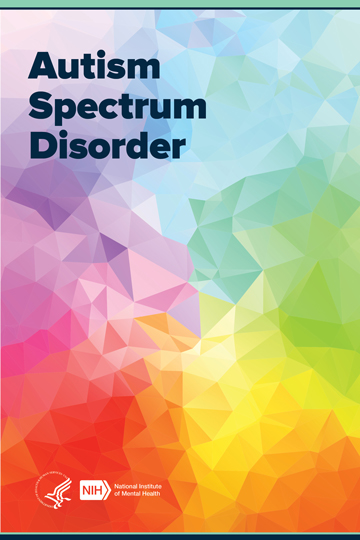Browsing Social Obstacles: Tips for Individuals Living with Autism
Browsing Social Obstacles: Tips for Individuals Living with Autism
Blog Article
Understanding Autism: A Comprehensive Overview to Symptoms And Signs
Autism Range Disorder (ASD) encompasses a vast range of qualities that can dramatically influence an individual's social interactions and everyday performance. Recognizing these subtleties not only aids caregivers and teachers in supplying ideal assistance yet also fosters a much more inclusive atmosphere for people with ASD.
Introduction of Autism Range Problem
Specifying Autism Range Problem (ASD) entails identifying it as a complex neurodevelopmental problem identified by a range of challenges in social communication, interaction, and behavior patterns. The term "range" shows the large variability in signs and their seriousness, which can differ considerably from one individual to another. ASD generally manifests in early childhood years, although some individuals may not receive a medical diagnosis up until later in life.
Factors affecting the development of ASD include ecological aspects and genetic proneness, although the specific causes remain under examination. Diagnosis typically relies upon behavior evaluations, as there are no definitive clinical tests for ASD. Early treatment is vital and can substantially improve end results, concentrating on enhancing interaction skills, social communications, and flexible behaviors.
People with ASD may also display special strengths, such as phenomenal attention to information or particular locations of competence. Understanding the diverse nature of ASD is essential for cultivating an inclusive environment that fits neurodiversity. Proceeded research is crucial for developing efficient treatments and support systems, allowing individuals with ASD to prosper and fulfill their prospective within culture.
Common Indications of Autism
Identifying the usual indicators of Autism Spectrum Problem (ASD) is vital for early identification and treatment. These indicators can vary commonly in intensity and discussion, but specific features are regularly observed in individuals with ASD.
One of the most prevalent signs is a significant problem in establishing and preserving eye call. People may also exhibit minimal passion in social communications and show a preference for singular play.
Sensory level of sensitivities are likewise common; individuals might underreact or overreact to sensory stimulations, such as appearances, lights, or noises. autism. Language development can be irregular, with some kids exhibiting postponed speech or utilizing language in unusual means, including echolalia-- repeating sentences or phrases listened to somewhere else
It is vital to note that not every person with ASD will present all these indications, and the level of these habits can vary substantially. Early recognition permits timely assistance and resources, boosting the high quality of life for those on the range.
Social Communication Obstacles
Social communication obstacles are a trademark of Autism Range Disorder (ASD), affecting an individual's capability to engage successfully with others. These troubles can materialize in numerous ways, including obstacles in initiating and keeping conversations, comprehending social signs, and responding appropriately in social communications.
People with ASD may have a hard time with nonverbal interaction, such as eye contact, faces, and body movement. This can lead to misunderstandings, as their communicative intent may not be appropriately interpreted by others. Additionally, they might locate it hard to realize the nuances of tone and context, which are vital for effective communication.
In group settings, individuals with ASD may feel overwhelmed and may not understand exactly how to join in conversations (autism). They may likewise display irregular conversational patterns, such as monologuing about particular rate of interests without acknowledging social reciprocity
Additionally, these difficulties can lead to social isolation or problems in developing relationships, as peers may misinterpret their behavior or interaction design. Comprehending these social communication difficulties is essential for fostering supportive settings that advertise social abilities advancement and enhance the quality of communications for people on the autism spectrum.
Sensory Feedbacks and level of sensitivities
Many individuals with Autism Range Disorder (ASD) experience increased sensory level of sensitivities that can substantially impact their everyday lives. An individual with ASD might find daily sounds, such as a vacuum cleaner or crowded atmospheres, extremely traumatic, leading to anxiety or disasters.
Sensory handling differences in individuals with ASD can likewise influence their ability to engage in social communications and regular tasks. A child who internet is sensitive to touch may withstand physical affection or prevent particular clothing fabrics. Additionally, a preference for sure structures or preferences can restrict nutritional alternatives and develop challenges during mealtimes.
Recognizing these sensory sensitivities is important for identifying the special experiences of individuals with ASD. Recognition of their sensory profiles can cultivate far better communication and assistance strategies, developing an environment that suits their needs and improves their quality of life. Eventually, acknowledging sensory sensitivities is an essential element of understanding the broader range of autism.

Sustaining Individuals With Autism
Efficient assistance for people with Autism Spectrum Problem (ASD) is essential for web boosting their overall wellness and cultivating independence. Support approaches ought to be customized to meet the unique requirements of each person, considering their strengths and difficulties.

Social skills training can likewise play an essential duty. autism. Involving people in team activities or role-playing situations can improve their capability to navigate social interactions. Additionally, it is vital to inform member of the family, caretakers, and peers regarding ASD to foster a inclusive and encouraging area
Final Thought
By promoting enhanced communication and social skills, people with autism can navigate their atmospheres more effectively. Inevitably, enhanced recognition and assistance a fantastic read can considerably boost the quality of life for those influenced by ASD.
Autism Spectrum Condition (ASD) incorporates a wide variety of features that can considerably affect a person's social communications and daily functioning.Individuals with ASD might battle with nonverbal communication, such as eye get in touch with, face expressions, and body language.Several people with Autism Spectrum Disorder (ASD) experience increased sensory level of sensitivities that can dramatically influence their daily lives.Sensory processing differences in individuals with ASD can also influence their ability to involve in social interactions and routine activities.Understanding these sensory sensitivities is vital for acknowledging the one-of-a-kind experiences of people with ASD.
Report this page